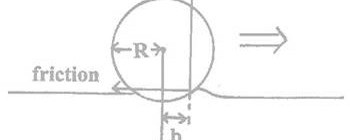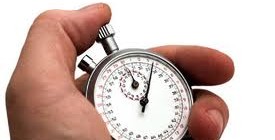Golfers everywhere are enamored with the vision of the perfect putting stroke, that endlessly repeatable motion that sends the ball down its intended line with 100% precision and grace. We all assume that with a better stroke we will make more putts. In fact, I have had many golfers say there is no need to work on their green reading skills until their stroke is good. That’s a statement that always confused me, so lately we decided to create a simulation to study the balance of read and stoke, and see what the dynamics are. The goal is to see what has a bigger effect on putting performance, Start Line precision or Green Reading accuracy.
The Method
We simulated 1000 putts from random distances between 5 and 20 feet using a random number generator to vary the green reading error as a percentage of the length of the putt, and the start line error in terms of degrees offline. The Green-Reading error varied from 0% (perfect read) to 15%, and the Start Line error varied from 0 degrees (perfect line) to 5 degrees off line. A 10% Read error means that on a 10 foot putt the maximum misread would be 12″ high or low. The errors could be positive or negative, meaning an over or under-read, and starting the ball higher or lower than your intended line. The goal is to see what has a bigger effect on putting performance, Start Line precision or Green Reading accuracy. For now we assume a proper speed for all putts in order to simplify the dynamics down to just two variables. We then ran the 1000 putt simulation 100 times for each Line and Read error value (2.4 million putts), and took the overall average of each set.
The Results
The results surprised us, a lot. The table below shows what percentage of putts were made given varying errors in Line and Read. The top left cell shows perfect Line and perfect Read (0-0), and obviously a 100% make rate. What was shocking is the two right columns. The simulation suggests that with a poor read, improving your Line accuracy has ZERO effect on how many putts go in. No matter if your Line is perfect, or up to 5 degrees off, you only make 10% of putts in this range. This unintuitive results seems to be the fact that as your line improves, you both make and miss an equal number of putts, you’ll make more of the better reads and miss an equal number of the poor reads.
But what it also shows us is that with better reads, an improved stroke can have a huge impact on the make rate. As the Read gets better than 5% accuracy, there is a big jump in performance for each degree of accuracy you gain in your start Line. At a 5% Read error, you would only misread a 20 foot putt by a maximum of 12 inches, and a 5 foot putt by a maximum of 3 inches. It also shows us that if your Read is accurate to 5%, there is not much to gain after you have achieved a 1% degree of error or better in your start line. However with a perfect read each degree of accuracy you gain in start line results in dramatically more putts made.
|
Read Error
|
||||
|
LineError
|
0%
|
5%
|
10%
|
15%
|
|
0°
|
100%
|
31%
|
16%
|
10%
|
|
1°
|
77%
|
31%
|
15%
|
10%
|
|
2°
|
44%
|
30%
|
15%
|
10%
|
|
3°
|
29%
|
28%
|
15%
|
10%
|
|
4°
|
22%
|
22%
|
15%
|
10%
|
|
5°
|
18%
|
18%
|
15%
|
10%
|
This simulation does not account for speed nor whether a player always misses his line in one direction only, for example always high or always right. However it certainly suggests that until a player reaches a minimum level of proficiency with his green-reading, he won’t see much improvement in his putting regardless of how much his stroke improves. Once his read becomes more accurate, improvements in the consistency of start line should show big results.


























